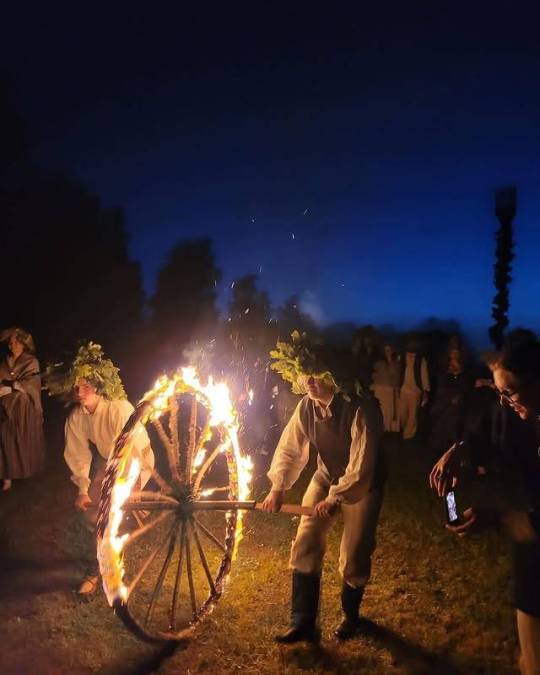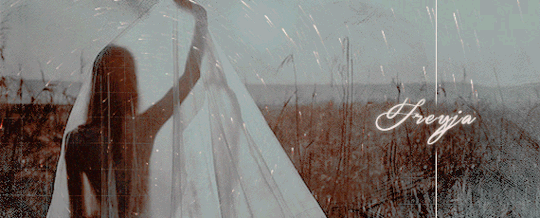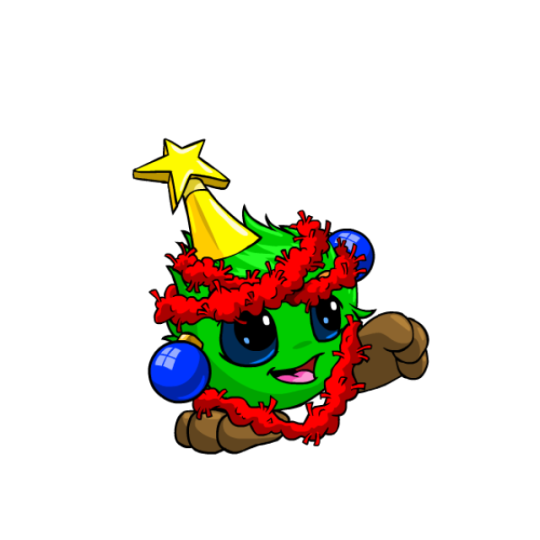#European Festivals Association
Explore tagged Tumblr posts
Text
#hey does anyone know what the deal was with the claims that Friday the 13th and Easter are actually pagan feminist fertility holidays #that were appropriated by the patriarchy/Catholic church? #because I feel like I'm going crazy seeing cnn quote that tumblr post from years ago #like which one came first (bc I can't find that post) and how true are those claims
@assclarinet Wh... what do you mean CNN is quoting tumblr posts. What.
Anyway. These claims go around constantly and they are just as sourceless as anything else in that post.
And as it is Easter Season, let's address them:
Was Easter actually a pagan feminist fertility holiday appropriated by the Catholic Church?
Short answer: No.
Long answer:
Easter is the theological core of Christianity. There is no Christianity without Easter. Easter is the holiest day of the Christian calendar, because it is the theological crux of the entire religion: that Jesus died, and then three days later he rose from the dead, his sacrifice having redeemed the world of sin and his resurrection ushering in a new age. Easter is a very Christian thing.
That's not typically what people who say this mean, though. They don't mean the Christian holy day of Jesus's resurrection Easter Sunday, they mean the hegemonic spring holiday in the culturally-Christian world that is pseudo-secularized Easter.
Was placing the central element of Christianity in the spring a way of co-opting pagan spring fertility festivals? No. It's fairly central to the Last Supper-crucifixion-resurrection narrative that it happened at Passover. The Gospels pretty well agree on this part, though there's conflict in the scholarship of whether the Last Supper was a Passover meal proper or happened a day before. (The seder as it is understood today wasn’t performed the same way back then, so it wasn’t properly a seder, either.) In early Christianity, the association of Easter with Passover was theologically significant--Jesus was (and is) called the Paschal lamb, equating Jesus's sacrifice with the sacrifice/slaughter of a lamb for the deliverance of the people from death. The timing of Easter is one of the few Christian holy days calculated based on the logic of the Jewish luni-solar calendar. It's not the same exact calendar, and they don't always directly coincide, but it's the same basis.
Early Christianity grew out of Judaism, and its relationship to Judaism, its self-view as the culmination of Judaism, remained significant to figures like Paul who have defined Christian thought and Church organization ever since. (Here’s a standard view on this presented from a Jewish perspective.) (This is a super interesting perspective from a Congregationalist Christian theologian with a keen interest on the Jewish roots of early Christianity.) (Here’s also a really interesting interview with provocative Jewish philosopher Daniel Boyarin about it.) Christianity and Judaism probably started really developing in different directions sometime after the destruction of the Second Temple in 70 CE, with the next few centuries seeing the rise of Rabbinic Judaism as well as the influx of pagan gentiles adopting Christianity and bringing their theological and philosophical backgrounds into it.
The upshot is: Easter is in the spring because Passover is in the spring.
Does the name "Easter" come from Ostara or Ishtar? No. These are the etymologies I see proposed to say, see! "Easter" steals the name of a pagan fertility goddess! And that's a super English-centric way of looking at the world. In most European languages (and let's be real, when people talk about Christianity stealing pagan holidays, they usually are thinking about, like, Celts), the name of Easter comes from the Latin "Pascha" which was adopted from the Greek "Pascha" which, wow, sounds an awful lot like Pesach, the Hebrew name of Passover. Because Easter was associated with Passover. Even in English, the formal, liturgical word for "pertaining to Easter" is "Paschal". So only in Germanic languages like German and English does the name of Easter come from non-Paschal origins.
Also there is no connection to Ishtar.
The etymology of "Easter" is super obscure, though.
Well, there was an Eostre, right? And the Easter bunny tradition was stolen from the pre-Christian Germanic pagan festivals for Eostre or Ostara? Ehhhhh. Dubious. This Library of Congress folklore blog post by a folklorist who has studied Middle English has a lot of well-cited information suggesting that most "received wisdom" about the pagan festivals or Eostre/Ostara that featured a hare derive from the Brothers Grimm in the 1800s. Jakob Grimm cites a single source for the evidence of a goddess Eostre, an 8th century Christian monk's writing.
Eosturmonath has a name which is now translated "Paschal month", and which was once called after a goddess of theirs named Eostre, in whose honour feasts were celebrated in that month. Now they designate that Paschal season by her/its name, calling the joys of the new rite by the time-honoured name of the old observance.
Definitely possible, even likely, there was some syncretism in the celebration activities there, but it's hard to prove what, and to what extent.
Grimm is the one who postulates the existence of Ostara based on this, using the methods of historical linguistics to derive a cognate with the old German oster-month. Note that the Grimms were 1) linguists as well as folklorists, and the idea of Ostara appears to come from linguistic hypothesis moreso than actual gathered folklore, and 2) very invested in nation-building through their folklore project. No other sources for Eostre or Ostara exist, though modern linguists have hypothesized a connection to the Vedic Ushas and Greek Eos as Indo-European dawn-goddesses. (Also hence the word "east.") So Eostre and Ostara may certainly have existed as Germanic goddesses/personifications of the dawn, but probably not fertility. And the month around April, as the return of spring, was associated with the dawn goddess. If so, Eostre gave her name to Eosturmonath ("Eostre-month"), which is when Easter fell (see above re: the timing of Passover), and so Eoastremonath became Easter-month became Easter. "Easter" then likely derives from the name of the month, not the goddess directly.
The story of Ostara and a hare was, as best I can tell, invented in the 1800s during a time of renewed interest in European paganism as, again, nation-building projects.
Hares, eggs/chicks, and flowers are all perennial symbols of spring and new life in Europe, so it wouldn't be surprising if older celebrations in springtime used them, and those got transferred onto Easter celebrations because, hey, spring, dawn, sunrise out of the night, new birth, resurrection, new life, it all kinda goes together. But it wasn't a holiday that was "appropriated by the patriarchy/Catholic Church,"; at most it was traditional spring festivities transferred onto the new spring festivity. This happened a lot.
As for the second question...
Was Friday the 13th a pagan fertility holiday and that's why it's been made unlucky now?
Short answer: No.
Long answer:
No one really agrees on why Friday the 13th is unlucky, but it probably also comes from Christianity. Friday is the unlucky day because it's the day that Jesus was crucified. 13 is the unlucky number because that's the number of people at the Last Supper. I've also seen several people online reference that Loki was the 13th guest at the feast where he caused the death of Baldr, but I can't find an actual source for that, and it feels very Christianity-influenced. The most influential records of old Norse/Icelandic mythology were written down in the 1200s, well after Christianity was the primary religion of the region, and Christian influences on Norse mythology as we know it now cannot be wholly discounted. So I'm somewhat skeptical Loki is the origin, either.
But also, and this is where I get more into personal hypothesizing, 12 is a very strong and auspicious number in a lot of cultures. There are (typically, approximately) 12 full moons in a year, so lots and lots of calendars split the year into 12 months. 12 is a good number for timekeeping and subdividing: Ancient Egyptians were the ones to develop 12-hour days/nights, and Mesopotamians the ones to split time into units of 60. There were twelve tribes of Israel, twelve disciples, twelve Olympians, twelve labors of Hercules, twelve constellations in the Greek zodiac and twelve years in the Chinese zodiac cycle. English has unique number-names up to twelve before we start going three-ten, four-ten, etc. We like twelves! Particularly in cultures influenced by the Mediterranean sphere. So I can imagine prime thirteen is ungainly, awkward... unlucky.
(Also, the idea of splitting the week into a cycle of 7 days originates from Judaism in the Biblical book of Genesis, continuing into Christianity and Islam from the same origin. The whole concept of "Friday" is inextricable from Abrahamic religions.)
There's no evidence it was ever a sacred pagan day for sex or anything like that. It just wasn't.
299 notes
·
View notes
Text


Turning of the Wheel: Summer Solstice traditions in Latvia
Photographed by Jānis Jusjukevičs and Ivo Kušķis
_______________________
Rooted in ancient pre-Christian nature worship, Latvia’s midsummer festival called "Līgo" or "Jāņi, historically honored the summer solstice figure Jānis.
Jānis is a complex and debated figure in Latvian mythology. Often mistakenly referred to as a deity of fertility and light, and additionally being linked to the Dieva Dēli - twin sons of the sky god found in Baltic and other Indo-European traditional beliefs (i.e. Ashvins in Hinduism). Unlike other deities of the Baltic pantheon, he appears almost exclusively in connection with the Midsummer festival, raising questions about his origins. Some scholars believe the name "Jānis" may be a later adaptation of John the Baptist, introduced during Christianization. However, the rituals associated with his festival, such as: bonfires, wreaths, fertility symbols, and even remnants of phallic cult practices, are unmistakably pre-Christian and rooted in ancient agrarian traditions.
During Jāņi rituals, villagers crowned with oak and wild herbs gather on hilltops, at dusk, to roll a flaming wheel downhill; a fiery symbol of the sun’s peak and its slow descent. This ritual, like the wreaths and Jāņi fires, invokes ancient hopes for protection, abundance, and harmony between sky, land, and spirit.
#jāņi#baltic mythology#līgo#latvija#divine twins#dieva dēli#latvian#jāņis#summer solstice#baltic paganism#proto-indo-european mythology#proto indo european#indo european#hinduism#baltic people#balts#baltic#latvians#midsummer#vedic#pre-christian religions#pre-christian#ashvins#hindu gods#native religions#native faiths#paganism#pagan#midsummer day#latvieši
73 notes
·
View notes
Text
Writing Notes: Yellow

Symbolism of Yellow
Yellow color symbolism includes:
Caution: Your eyes see yellow first from a distance, so officials use yellow for any object you need to see quickly, such as school buses, traffic signs, traffic lights, taxi cabs, and safety vests.
Cowardice and sensationalism: In the United States, being “yellow” or a “yellow-belly” suggests cowardice. The term “yellow journalism” means a news source sacrifices good reporting for sensational headlines to make a profit.
Happiness: Yellow, particularly bright yellow, connotes cheerfulness. In China, yellow signifies joy, glory, and wisdom. Fashion, packaging, and advertising designers use yellow to indicate celebration, frivolity, spontaneity, and jubilation.
Optimism: Yellow ribbons symbolize the hope of the return of a loved one after a long absence, as popularized in the classic song “Tie a Yellow Ribbon Round the Ole Oak Tree.” In addition, yellow ribbons symbolize hope and awareness around AIDS, bladder cancer, endometriosis, and suicide prevention.
Sickness: Yellow can mean illness or nausea, especially in the combination of yellow-green.
Warmth: Because of the association of golden yellow with sun and sunlight, many think of yellow as a warm color. In combination with red, it symbolizes heat or fire. A yellow room can make you feel warm in comparison to a white room since cool colors in interior design instead invite relaxation and calm.
Wisdom: In medieval Europe, yellow meant reason. Modern European universities’ scientific faculty still use yellow caps and gowns to represent reason in the world of science.
Some Pros of Using the Color Yellow in Design
Perhaps the most uplifting color on the color wheel, yellow adds cheer and festivity to any design. Pros of using yellow in design include:
Yellow grabs your attention. Bright yellow captures visual attention immediately, especially as an accent color or in color combinations with darker hues, such as black or dark blue. You’ll find yellow is a popular choice in logo design for this reason.
Yellow triggers mental activity. According to color psychology, yellow may increase mental activity and stimulate the nervous system.
You can see yellow from a distance. If you’re designing a sign or billboard you hope will gain attention, yellow claims the distinction of being the first color the human eye can observe from a distance.
Some Cons of Using the Color Yellow in Design
Yellow is a bold color that won’t work in every context. Cons include:
Yellow is difficult to read. Though yellow captures attention, reading the color yellow fatigues the eye more than any other color due to the amount of light it reflects. Using yellow as a background can cause eye strain.
Yellow may cause frustration. Though experts seem conflicted on this, yellow may make you feel frustrated or anxious.
Some forms of yellow pigment are toxic. Be wary when using the color cadmium yellow, especially in powdered form, as inhaling the highly toxic chemical element cadmium can negatively affect your health.
A Brief History of the Color Yellow
Due to an abundance of a natural iron-rich mineral called yellow ochre, the color yellow dates to the first examples of human art—as far back as a 17,000-year-old yellow horse, a figure in a paleolithic cave painting in Lascaux, France.
In ancient Egypt and ancient Rome, painters used yellow ochre pigment to paint gold and skin tones in murals and on the walls of tombs.
Early Christian art used yellow to symbolize Judas Iscariot and heresy, and Hinduism art used yellow to represent deities.
A synthetic replacement for yellow ochre became popular in the early 20th century, and modern painters still use it today.
Source ⚜ More: Notes & References ⚜ Writing Resources PDFs
#yellow#colors#writing reference#writeblr#worldbuilding#colour#dark academia#literature#writers on tumblr#spilled ink#writing prompt#creative writing#light academia#writing ideas#writing inspiration#writing resources
89 notes
·
View notes
Text
Tens of thousands of people joined the Pride march in Bucharest on Saturday in the largest-ever such parade to take place in Romania.
About 30,000 people, many waving rainbow flags and chanting slogans calling for solidarity and tolerance, took to the streets of Bucharest on Saturday in a march to celebrate the diversity and visibility of the LGBTQ community in Romania.
It was the biggest such march in the 20 years since the LGBTQ Pride march was first organised in the country, according to the organisers.
The first Pride in Bucharest emerged in 2005 as a defiant gesture following the decriminalization of homosexuality. But only a few hundred participants then braved the threats and hostility.
Over the next two decades, the event has been transformed into an annual cultural festival featuring more than just the parade but also films, debates, art shows and sports events.
On Saturday, attendees marched from the government building to a park in front of parliament. Rainbow flags waved, music played, and banners called for civil union rights, transgender healthcare access and legal protections
The mood mixed festivity with advocacy: dance, cheers, and determined slogans, like “Love is the worst feeling you could hate”, and “Equality in love, equality in inheritance. Civil partnership for all”.
“This year’s Pride, regardless of how many people attended, shows that our protest has taken root in the public consciousness. We are now a strong presence in public life, and our visibility can no longer be ignored or downplayed,” said Victor Ciobanu, director of the Accept Association, one of the march’s organisers.
While the event itself was peaceful, a few protesters carrying cartons of eggs were forcibly removed from the route.
A small counter-demonstration, calling itself “The March for Normality”, was held earlier in another part of Bucharest, where participants carrying religious icons and crosses called for an Orthodox Christian nation.
The influential Romanian Orthodox Church, to which more than 85 per cent of Romanians belong, according to census data, has repeatedly spoken out against homosexuality as a sin, and against civil partnerships.
On Thursday, it expressed disapproval of the Bucharest Pride march, which fell on the eve of the major religious feast of Pentecost. The Church called the event “a provocative and entirely inappropriate act”, which was harmful mainly to children and young people.
Romania decriminalised homosexuality in 2001, decades later than other parts of the EU. It remains one of the most restrictive countries regarding LGBT relationships in the European Union.
Recent attempts to introduce civil partnership have stalled in parliament, blocked by opposition from religious groups and conservative lawmakers. The Romanian Constitution defines the family as a freely consented marriage between spouses, without specifying gender.
The European Court of Human Rights in 2023 told Romania to provide legal recognition to same-sex couples but implementation has yet to begin.
Surveys show younger Romanians are more supportive of equal rights, suggesting a slow cultural change. But the political class remains cautious, wary of a backlash from a largely Orthodox Christian electorate.
82 notes
·
View notes
Text
9th and 12th Houses - How Far is Foreign?

An insight, that adds to depth of understanding of Astrology through diving into Vedic resources is the change in perception between the 12th and the 9th house.
In popular Astrology circles, both of these houses are commonly associated with foreign lands. However, as you explore the meaning of these houses more, you begin to understand them deeper in polarity with their opposite.
The actual house of foreign, far away travel (or relocation, depending on the chart) is the 9th house. That is because the 9th house is the opposite of the 3rd house.
Say you are European, and you lived your whole life in Europe, and you travelled around different European countries to explore the continent. This is the 3rd house. It is the expansion beyond your local home country into exploring its nearest cultural environment, and at the end of such a pilgrimage, you end up with a personal understanding of your individual, cultural identity, which moves you to its emotional interpretation in the 4th house.
But then lets say you travel or move from Europe to Asia, either of the American continents, Australia…take your pick. This is the activation of the 9th house. Because you are no longer exploring just the back yard of a culture with a certain degree of similarity, you are entering a completely new physical world.
This is why houses 9, 10 and 11, and 12th to an extent, are found in charts of famous people. You need to be able to participate in an energy, an idea, that is going to spread into foreign lands to truly be famous. This applies even if we’re talking about online success, which is the way people get recognition nowadays. Otherwise, you are at best a local singer on your continent or your country’s music festival. There is nothing wrong with that of course, as many people love to contribute to their community and they’re happy doing so, but it’s still an accurate observation. You need to be able to go far away, not strictly physically but energetically, to touch a variety of people from many cultures.
You might wonder, how does the 12th house fit into this? Clearly, it’s part of the whole 9th, 10th, 11th and 12th house group, so it should also rule foreign lands. But the 12th house is actually more than that. The 12th house rules a fantastical, foreign idea, that might not necessarily be grounded in the immediate physical, but is nevertheless energetically real and can be accessed from anywhere. It’s the idea of the collective emotional consciousness, that may not have the most quick and obvious material manifestation but is nevertheless a very real thing existing within this Universe.
Up until the 11th house, through 9th and 10th, we are dealing with more or less tangible ideas regarding foreign lands. Let’s say in the 9th house you relocated to a completely foreign culture, in the 10th house you found a way to tangibly join the most prominent physical environment of the world through that culture, in the 11th house you met some of the most prominent, affluent people in the world. I don’t have any 11th house planets, but to give you an idea of how it works, my husband has Venus conjunct Mars in the 11th house, we live in the Las Vegas area, and he plays sports and is casually friendly with some of the wealthiest people in the world, who own successful businesses, own several properties across the world, and spend a lot of their time either making a lot of money or travelling the world, or both. We are not one of those people, but it should give you an idea of what the 11th house is. It’s the creme de la creme of the physical world. I don’t personally interact much with these people, as they are my husband’s friends, not mine, and I don’t play sports with them, but I have a deep awareness of how advanced socially and financially this particular group is, having travelled to many poorer parts of the world. There are people in this world, starving, so in comparison to them, the 11th house society is the top 1% of 1%.
You might think, well, the 11th house is everything, so how can the 12th house be more? The 12th house is more because it sells something even the 11th house people can’t resist, it sells the ultimate fantasy.
In the 12th house we move on to people so wealthy, they barely even interact with others. We move to intangible concepts, physical areas and objects, that provoke people to spend obscene amounts of money simply due to some idea. The 12th house is not just real foreign travel like the 9th house, it is the embodiment of the realisation of all fantasies. That is why Venus is so happy in the 12th house, because it enjoys the ultimate idea of fantastical luxury.
The foreign area that we travel to in the 12th house is not this globe, it is deep inside us. By the time we realise all our fantasies in the 11th house we can feel tired, or even jaded. But in the 12th house we are stimulated to all of our secret, hidden desires being provoked and coming true. This can be done not only within our home, within our room, but completely within our minds. Those, who are successful in the 12th house are those, who made those fantasies concrete enough to realise them and live within them.
What if you could taste and smell the finest perfume created on this planet from purely natural oils? What if you could touch the finest fabrics, created in corners of the world you never even dreamed of? What if you could live this dream, every day, surrounded by an infinite kaleidoscope of the pinnacle of perfection achieved by our planet until this time? “What if?” is the exotic, “foreign”, “far away” dream of the 12th house, and a well realised 12th house is a dream come true.
To offer up an example, in the last few years, youtubers living in rural areas from all over the world have popped up on the internet, offering videos from their seemingly idyllic life. That is the definition of the 12th house fantasy, devoid of the actually reality of having to take the 9th house physical pilgrimage of travelling to rural China and enduring all the difficulties involved with facing the reality of such a location. It may seem idealised, yet the source material for filming is real, so while it may be distant from the viewers geographically, while it may cost the locals a lot of work, it is nevertheless part of an actual, existing reality.
This dream, that can seem excessive to a mundane mind, becomes even clearer in the context of the 12th house’s polarity, the 6th house. The 6th house is the tough battle of dealing with the ugliness and conflict of this world. That is the reality of this physical world for most of us, we get up every day and deal with conflicts, that we have in front of us. It is exhausting, and so the 12th house is everything that heals and soothes the pain of any conflict that ravaged us in the 6th house. It’s the world offering no resistance, it’s all boundaries being breached. After all, in our dreams, or fantasies, we want everything to be perfect and smooth.
Ironically enough, the karaka of the 12th house is Saturn. As someone with significant 12th house influence, it is pretty clear to me why. In order to have only the finest dream come true, to really live in a beautiful fantasy, one actually needs to do a lot of research, be picky, critical and have background expertise and know-how. Otherwise, even as just a consumer, you would be easily fooled, hoodwinked into a fake product, or end up overpaying on something, that is not worth the money you invest into it. Scrutiny of Saturn is necessary for our fantasies to be smooth. It is not something, that is given to us that easily. Saturn also rules isolation, and if the 9th house is foreign, the 12th house is the pinnacle of remote. The 9th house is what is foreign and exciting to us, mentally and physically, but the 12th house represents the most remote corners of both the physical world, and our minds.
This is why the 12th house is the furthest away from the 1st house, our basic, natural, physical life. Because the furthest thing on this planet is not just a foreign continent, it’s a journey inside our minds and emotions, the ability to blend discernment and internal surrender to divine perfection, that leads to manifestation. It is the full depth of untapped potential on the very bottom of our subconscious, a research and response to all collective energetic resources available on the planet, a gold mine waiting to be explored, exploited, and enjoyed. And it is tapping into this gold mine, that has the power to tempt, seduce, and attract people from all around the world into directing their energy towards us, even if we’re physically just sitting in our room, far away from them.
299 notes
·
View notes
Note
Hello Rainbowsky, hope you are doing OK! I just wanted to say, I saw GG and DD's photshoots for fashion week, and people are talking about them both carrying tulips (red for GG and white for DD). I was wondering if tulips have any cultural significance, if it's just a common thing to do in China for a festival, or is it something GG and DD have done intentionally? Thank you for listening :)


Hi sasukeforhokage-blog1! I'm doing OK, thanks. Hope you're well too!
Yes, for both of their photo sets they were seen carrying tulips. And just in case anyone's wondering - no, they haven't carried them in these fashion week photo shoots in the past.
I saw a C-turtle post about the number of flowers each was carrying, claiming GG was carrying 18 and DD was carrying 23. I have counted them both.
The bouquet GG has is definitely 18 tulips.
DD's, no matter how many times I count I get at least 24 every time, but it's hard to be precise because part of the bouquet is obscured in every shot it appears in.
Others are free to do their own counts and come to their own conclusions. I don't personally put too much stock into the numbers, but people are free to clown as they wish.
As for significance, I don't think we can read too much into the flowers themselves. It's quite traditional - even cliche - to carry a bouquet around the streets of a famous European city. It's also very photogenic and romantic, so perfect for photo shoots.
Tulips are also quintessentially European (although they originated in Central Asia). Europe is at the center of the tulip industry, and incredibly gorgeous, high quality tulips are readily available pretty much everywhere.
The fact that they both used tulips in their photo shoots, though - that is definitely 👀. And in fact, when Yibo Official posted the photo set (which also gets shared to his solo supertopic), they omitted the tulip photos entirely, even though they were some of the nicest from that set. I suspect they might have been too controversial, because solos are notoriously oversensitive about connections like this*.
*And I admit I cackle when I see them tip-toeing around solos in this way.
YBO did share the tulips on Instagram, though - where a huge percentage of his followers also follow GG.
Did GG and DD do this intentionally? Of course. In my opinion there's no other explanation. At the very least, it (once again) absolutely proves the 'GG and DD hate each other and are trying to avoid associations with each other' narrative to be completely absurd and clearly false. However, I'd take it even further and say this was an intentional candy on their part. This is the sort of thing they still like to do from time to time.
Not much more to say about it than that.
Here are some related posts on my thoughts about why they do these sorts of things:
What BXG Might Mean to GGDD
Relationship denials and the GGDD supertopics
Are GGDD’s intentional candies/kadian meant for each other, or for turtles?
You might also find my masterlist post helpful.
69 notes
·
View notes
Text
🐈⬛ ྀི Goddess Worship: An Introduction of Freyja 🐈⬛ ྀི

Note: Day 17 of our October calendar! Today we have an introduction of deities I work with/worship. This post is to provide some information about the deities but also how I work with them personally. Everyone has their own methods with the Gods, and you should do whatever feels right with you while also respecting the bases of the religions.
─── ⋆⋅☆⋅⋆ ───── ⋆⋅☆⋅⋆ ───── ⋆⋅☆⋅⋆ ───── ⋆⋅☆⋅⋆
Historical Background:
Freyja (or Freya) is a major goddess in Norse mythology, belonging to the Vanir tribe of deities, which are associated with fertility, prosperity, and nature. (Vanir and Aesir are different deities in the Norse Mytho). She is the daughter of Njord, the sea god, and sister to Freyr (Twins), the god of fertility, peace, and prosperity. Her hall is known as Fólkvangr which welcome half of the warriors who died in battle. She is also the goddess of love, beauty, war, death, and magic (her magic is known as seidr associated with prophecy and shape-shifting. she could see into the future and use the power of runes). Freyja’s worship may predate Norse mythology, with roots in earlier Germanic or proto-Indo-European traditions second the archeologists studies.

Attributes and Symbols:
Cats: Freyja’s chariot is said to be drawn by two large cats, symbolizing fertility and domesticity. She has been long symbolized through cats and usually people who. worship her will use cats to connect with her Boars: She also rides the boar named Hildisvíni, a symbol of fertility, protection, and strength. Brísingamen: Her famous necklace, a symbol of fertility, sexuality, and beauty. The Brísingamen was often considered an object of great power and desire as in the mytho many creatures and gods have fought to have it. Falcon Cloak: This magical cloak allows Freyja to shapeshift into a bird, symbolizing freedom, the soul’s flight, and her connection to magic. Amber and Gold: Amber, known as "Freyja's tears," is associated with the goddess due to the myth where she weeps golden tears for her missing husband, Óðr.

Worship and Rituals:
Seidr (Magic): Freyja is a practitioner and teacher of seidr, a form of Norse magic involving divination, trance states, and influencing fate. Women (and men) who practiced seidr would invoke her for aid. this pratice is still used in the Nordic countries but it needs to be taught through initiation. One cannot learn to practice Seidr magic without initiation by another Seidr. One way of worshipping her is through the practice of Runes. Love and Fertility: As a fertility goddess, Freyja was worshipped by those seeking love, marriage, and fertility. Offerings of gold, honey, and flowers were made in her name. A lot of people would also use sexual intercourse as a way to give away their energy to the goddess in exchange of love and pregnancy. Battle and Death: Despite being a goddess of love, Freyja is also a goddess of war and death. Half of those who die in battle are said to go to her hall, Fólkvangr, while the other half go to Odin’s hall, Valhalla. One can worship her not only for love but also for strenght in battles. She is fierce when it comes to help protect those who pray her. Now in the modern times, her worship of battles have been adjusted with internal battles, challenges in life and even justice. Festivals: Freyja was likely honored during seasonal festivals like Dísablót (mostly done during winter seasons), where offerings were made to the dísir, female spirits or ancestors, who were linked to fertility and protection. It involves sacrifices (not animals but instead sacrificing something of you in return of something else) and ritual offerings to Freyja or the feminine ancestor spirits. Unfortunately there isn't many source of information about the norse mythology as Norse People didn't especially write it.

-> When worshipping Freyja, do not take her for granted. Her energy is pure and warm but she wishes for attention. Make a small altar for her, give offerings every friday (and of course offerings during spells were you invoke her energy or help). The important here to feel connected to the deity and respect her as a whole energy. Everyone has their own way of praticing, so do what feels right. But remember to do your own research. Get out of TikTok and READ! archeological revues and works are important.
-> Ideas for offerings: Wine, honey, bread, prayers, cat symbols (statues, whiskers, furr, ect), same with boar figures, jewelery, gold, coins, amber, red fruits, apples, incense, candles, anything else that feels right to you

BIBLIOGRAPHY:
"Freyja, Lady, Vanadis: An Introduction to the Goddess" by Patricia M. Lafayllve
"The Viking Way: Religion and War in Late Iron Age Scandinavia" by Neil Price
"Gods and Myths of Northern Europe" by H.R. Ellis Davidson LA MITOLOGÍA, Y. E. C. D. THE MYTHOLOGY AND CULT OF FREYJA AND HER IMPORTANCE TO VIKING AGE WOMEN. Bellows, Henry Adams (Trans.) (1923).
A Edda Poetica. American-Scandinavian Foundation
─── ⋆⋅☆⋅⋆ ───── ⋆⋅☆⋅⋆ ───── ⋆⋅☆⋅⋆ ───── ⋆⋅☆⋅⋆
#freya#freyja#norse gods#norse mythology#freyja worship#deity#deity work#deity worship#deities#paganism#gods#norse paganism#norse runes#norse pagan#norse
120 notes
·
View notes
Text
Buck Moon - July 20-21, 2024

Put on your flower crowns and your walking shoes - it’s time for the Buck Moon!
Buck Moon 🦌
The Buck Moon is the name given to the full moon in the month of July and is called this because at this time of year, the rack of antlers previously shed by male deer are beginning to regrow and harden in preparation for the fall rutting season.
Other North American Indigenous names for this moon include Salmon Moon (Tlingit), Berry Moon (Anishinaabe), Month of the Ripe Corn Moon (Cherokee), and Raspberry Moon (Algonquin, Ojibwe). The West Abenaki also call this the Thunder Moon in reference to the often-stormy summer weather. (This one is my personal favorite and the name appears in lunar calendars just as often as the Buck Moon.)
European names for the July moon include Hay Moon and Wort Moon, and it should be noted that the name Stag Moon does appear in some European sources as well.
This year's Buck Moon will be at peak illumination at 6:17am EST on July 21st, so the moon will appear to be full on both the 20th and 21st. Also, it's a weekend, so plan your festivities accordingly!
What Does It Mean For Witches? 🦌
The July full moon continues June’s template of planning for the future, this time with a focus on your passions and ambitions. Reflect on what you’ve accomplished so far this year and plan your next step.
Dream big and plan big, but don’t give in to reckless urgency. Summer (and capitalist grind culture) gives us the urge to Go Go Go. Despite all this, it’s important to take time to rest and recharge, lest we find ourselves burning out and losing our motivation.
What Witchy Things Can We Do? 🦌
Celebrate your victories and revel in the abundance of the summer season. If you’re inclined to do so, take a page from the deer and do a bit of prancing around a bonfire or your favorite flower arbor with some festive flowery headgear.
Go exploring! Find a local park or garden and take a stroll among the greenery, or use TV and the internet to explore and learn about faraway places. This is another opportune time to go and check out pick-your-own farms and farmers markets as well. Sharpen your foraging and plant identification skills while you’re out and about!
If you’re tending a garden, harvest some herbs and investigate what you can make with them. Whether it’s seasoning for meals, homemade botanical products, or just helpful spell ingredients, many herbs and flowers have a plethora of uses. As an exercise, select three plants growing in your yard or garden, research their magical correspondences and botanical properties, and try to think of as many ways as possible to use each one for witchcraft and for practical purposes. For extra credit, pick something native to your area that doesn't appear in the western magical canon and use its' physical, folkloric, and historical associations to create something new!
(Safety Note: Always clean and prepare home-harvested herbs properly before using them for kitchen, bath, or medical preparations. Always be sure to properly identify any wildcrafted or foraged plants. Always consult a doctor before trying an herbal treatment and take all allergies, medications, and pre-existing conditions into account. Please also note that while herbal treatments can be helpful, it can have negative interactions and side effects just like any other medication, and it is not meant to be a replacement for modern medical care.)
Apart from the usual full-moon festivities, I’ve always found this is an excellent time for weather-witching. Summer weather is notoriously fickle, but it is also highly malleable - one recalls that old American Southern epithet of, “If you don’t like the weather, wait five minutes.”
If you’re hoping to bring some rain to water your garden or break the back of a heat wave, this may be the time to do it. My personal favorite folk magic ritual for rain-calling involves going outside with a broom and a bucket of water, using the broom to scatter drops of water over your yard, and shouting up to the clouds, “SEE? IT’S NOT HARD!”
Make sure you take local weather patterns into account and try to draw on existing fronts and nearby precipitation to get the desired result. And keep in mind that with weather magic, less is more and one casting is enough. Asking for too much or asking too often can produce undesirable results. And if you manage to make it rain, be sure to collect some for moon water!
If you’re interested in weather-witching, I highly recommend checking out this masterpost by @stormbornwitch for a number of excellent articles and suggestions.
Happy Buck Moon, witches! 🌕🦌
Sources and Further Reading:
Bree’s Lunar Calendar Series
Bree’s Secular Celebrations Series
Witchcraft Exercise - Creating Correspondences
Buck Moon: Full Moon in July 2024, The Old Farmer's Almanac.
Buck Moon Bonanza: Embrace July’s Massive Energy!, The Peculiar Brunette.
Everyday Moon Magic: Spells & Rituals for Abundant Living, Dorothy Morrison.
(If you’re enjoying my content, please feel free to drop a little something in the tip jar or check out my published works on Amazon or in the Willow Wings Witch Shop. 😊)
#witchblr#witch community#witchcraft#full moon#moon magic#pagan#buck moon#thunder moon#lunar magic#lunar calendar
215 notes
·
View notes
Text

Back to Sailor Moon for the floriography series! First up is Saturn! 🪐
The flower I chose for Saturn is the white chrysanthemum. White chrysanthemum flowers are commonly used in funerals in East Asian and some European cultures, and is associated with death, bereavement, and condolence. However in Chinese culture it is also associated with the traditional Double Nine Festival, a festival that celebrates one’s ancestors and during which people pray for health and a good harvest. In that context, chrysanthemums, and wines made from the flower, are associated with health and longevity. The two paradoxical meanings is a nice fit for Saturn, the herald of death but also of rebirth.
190 notes
·
View notes
Note
have you reviewed the Christmas paintbrush colour?
(This is the only Neopet review in the inbox right now, so send requests if you have them.)

Christmas is kind of a weird concept for a colour, mostly because of its name—after all, the existence of "Christmas" on Neopets implies that there's a Neo-Jesus that died for your sins. The actual Christmas equivalent of Christmas on Neopets is called the Day of Giving (taking place during the Month of Celebrating, i.e., December). Obviously "Day of Giving" is too much of a mouthful for a paintbrush colour, but they could've gone for something like "festive" or "holiday" instead. This would also accommodate other religions, as not all Christmas pets are Christmas-exclusive (the Christmas Pteri is a European robin—which is associated with Christmas over there, but is also just, like, a normal bird).
Anyway, in terms of the actual colour, there's not a whole lot of visual consistency. However, there is a lot of thematic consistency, and enough repeated colors and elements that it still comes across as cohesive. Common colors are white, green, red, gold, and sometimes brown (for reindeer-based pets), and common elements include candy cane striping, holly, bows, Santa outfits, scarves, and more. When good, it's a surprisingly really nice colour with a lot of customization potential. When bad, it's...well, pretty terrible (there were a lot of contenders for the Least Favorite Species winner here).


In terms of customization, Christmas pets generally fared well because there's nothing there that inherently doesn't work well with the pre-made pet templates, and they got a major benefit in the form of being able to remove their accesories to allow for more base colour options. However, I have noticed TNT got a bit sloppy when converting these guys, and you'll notice things like eye colors randomly changing after conversion for no reason.
Favorite Species:


Peophin: Peophins are an inherently beautiful species of pet, and the Christmas Peophin is unsurprisingly one of the most beautiful Christmas pets out there. The dark green base is very classy and contrasts beautifully with the cream-color accents, including some extra fluff around the hooves reminiscent of a shire horse. The big red bow provides a focal point and a nice additional pop of color, and is accented by holly berries both by the ear and the face plate. As a bonus, the clothes are optional.
My only nitpicks are that the lines around the hoof fluff are colored, but the lines around the mane are not. Also, I wish the holly berry was wearable, as it's the only Christmas-specific element left on the base. Still, a very nice colour overall.


Zafara: The only Christmas pet to be religion-based instead of aesthetic-based, the Christmas Zafara is super simple but very pretty. The white body and gold accents are very pretty, and the inclusion of wings and a halo look surprisingly natural. Both are also unexpectedly wearable items, resulting in a base that's like a mix of a yellow and white Zafara. My only nitpick is that, once again, the lines keep switching between being black and being colored. Also, the nose would've been better black. Otherwise, this one's very pretty.

Gnorbu: Both the Gnorbu and Bori are great Christmas pets with white bases and red and green accents, but I had to give this spot to the Gnorbu just because I think the design's extra cohesive—white base with no markings except for the dark-green spots, which go along with the eye, ears, and mane, which has some Christmas tree-esq decorations. I do wish the bow and lights were removable, as it's a lot more limited customization-wise than most pets, but it's still very pretty.


Vandagyre: One of the few good Vandagyre colours, the Christmas Vandagyre has two great designs—the main design has an outfit that's vaguely Santa Claus-esq, but a bit more detailed and sophisticated with elements like a walking staff and a gold undershirt, while the base has black markings reminiscent of a snowy owl (though TNT have stated it's a actually a gyr falcon, the Vandagyre's namesake). Good stuff all around.
Least Favorite Species:


Usul: There were a lot of strong contenders for this spot (pets like the Meerca, Moehog, and Lutari were up there, for example), but I have to give it to the Christmas Usul for having no effort put into it whatsoever. The base is literally just a yellow Usul with a slightly darker bow for no reason, and the only festive elements are a badly-drawn elf had a pair of tacky ears. Couldn't this have been, like, a white body with a big red present bow and striped mane or something? Or at least a full-body outfit, if they wanted to go the elf route that badly? Bah, humbug.
59 notes
·
View notes
Text
Travel the World of Imagination: Journeys Beyond Border
Kieth Denmark M. Retes | BSIT1A OVERVIEW:
Switzerland originates from the Old Swiss Confederacy established in the Late Middle Ages, following a series of military successes against Austria and Burgundy; the Federal Charter of 1291 is considered the country's founding document. Swiss independence from the Holy Roman Empire was formally recognized in the Peace of Westphalia in 1648. Switzerland has maintained a policy of armed neutrality since the 16th century and has not fought an international war since 1815. It joined the United Nations only in 2002 but pursues an active foreign policy that includes frequent involvement in peace building.
Switzerland is the birthplace of the Red Cross and hosts the headquarters or offices of most major international institutions including the WTO, the WHO, the ILO, FIFA, the WEF, and the UN. It is a founding member of the European Free Trade Association (EFTA), but not part of the European Union (EU), the European Economic Area, or the eurozone; however, it participates in the European single market and the Schengen Area. Switzerland is a federal republic composed of 26 cantons, with federal authorities based in Bern. references: Switzerland - Wikipedia

Switzerland, a small yet influential country nestled in the heart of Europe, stands out in many ways. From its awe-inspiring landscapes to its unique political system, Switzerland offers a blend of natural beauty, cultural diversity, and global diplomacy that few other nations can match. Its distinct character is a product of centuries of neutrality, innovation, and a deep respect for its heritage, all of which contribute to the nation’s unparalleled reputation on the world stage.

One of the first things that captivates visitors to Switzerland is its breathtaking scenery. The country is dominated by the majestic Alps, with towering snow-capped peaks that attract adventurers and nature lovers from around the globe. Whether it’s skiing in world-class resorts like Zermatt and St. Moritz or hiking through verdant valleys and along crystal-clear lakes, Switzerland offers outdoor experiences that are hard to rival. Beyond the Alps, the country is dotted with picturesque towns, lush meadows, and sparkling lakes, such as Lake Geneva and Lake Lucerne, each offering their own unique charm. The country's commitment to environmental preservation further enhances the beauty of these landscapes, ensuring that they remain pristine for future generations.

Swiss culture is characterized by diversity, which is reflected in diverse traditional customs. A region may be in some ways culturally connected to the neighbouring country that shares its language, all rooted in western European culture. The linguistically isolated Romansh culture in Graubünden in eastern Switzerland constitutes an exception. It survives only in the upper valleys of the Rhine and the Inn and strives to maintain its rare linguistic tradition.
Switzerland is home to notable contributors to literature, art, architecture, music and sciences. In addition, the country attracted creatives during times of unrest or war. Some 1000 museums are found in the country.
Among the most important cultural performances held annually are the Paléo Festival, Lucerne Festival, the Montreux Jazz Festival, the Locarno International Film Festival and Art Basel.
Alpine symbolism played an essential role in shaping Swiss history and the Swiss national identity. Many alpine areas and ski resorts attract visitors for winter sports as well as hiking and mountain biking in summer. The quieter seasons are spring and autumn. A traditional pastoral culture predominates in many areas, and small farms are omnipresent in rural areas. Folk art is nurtured in organisations across the country. Switzerland most directly in appears in music, dance, poetry, wood carving, and embroidery. The alphorn, a trumpet-like musical instrument made of wood has joined yodeling and the accordion as epitomes of traditional Swiss music.
references: Switzerland - Wikipedia
64 notes
·
View notes
Text
So, I started this whole journey based on the concept of the Green Man, and it quickly got out of hand. This is going to be perhaps too out there, and has convinced me to need to write something for a journal instead of unleashing it on internet denizens, but there are some interesting ideas here, so i will try to make it interesting.
There is a line that says that they are gods?—I am not sure I know which line I was referring to here, so if you know, let me know.
The Green Man
He is a symbol of cyclical time, which fits in with our story of beings who mimic and participate in the changing of the seasons. He sleeps through the winter, and is resurrected with the arrival of spring. Now, we have a literal green man in Jonesy. But this description could fit the siblings as a band.
The Green Man is similar to pan/bacchus/cernunnos. With him, there is a concept of nature reclaiming man’s work/achievements, as plant life will destroy a building over time without intervention.
There is a theme of chaos vs order, with nature being chaos and humans establishing order. One could argue that it is the opposite, but traditionally it goes this way in the lore. We also see the cycle of the seasons from death to life in the Green Man. He is also related to tree worship and May Day, a European fertility ritual/spring festival.
There is an English ritual where a man would put his face into a frame woven with greens, and portray the green man or be covered in it, walk around with a club, kind of a parallel to African ceremonies personifying spirits or gods (most cultures, really). He is portraying a wild man/deity of nature.

There is an argument that this is a modern creation based on church architectural details on churches in England and the story was created to explain the image. In this detail, the face often has greenery coming out of his mouth. This is not the same as Jonesy, since his greenery seems to come from the top of his head, but the similarity is there.
There is also Cerrunos, a Celtic God. He is an antlered god, ram horned, usually depicted sitting cross-legged. Themes are: fertility, the underworld, bi-directionality (opposites), animals, wild things.

Considering Franny, rain is often personified as a goddess:
Tefnut—Egypt
Meni Mekhala—Cambodia
Freya—Norse, fertility specific
Anitun Tabu (Tagalog)
Tayala: Phoenician, dew specifically
Hyades—Greek, group of nymphs
Nira: D&D
Coatrisquie—Taino
Lono—Hawaiian
Now, Tayala (no picture) is interesting as Franny mentions dew specifically. According to Caananite lore, Tayala is the daughter or consort of Ba'al, the storm god. It fits and it doesn't. We have a unit of three women and one man, with some relationship, familial or marriage (and with mythology, those aren't mutually exclusive).

We have run into Ba'al before. He is the figure associated withe the "as above, so below" gesture that has been associated with Wally (and early occultism and the church of satan). Here, Ba'al is a common name for a god in this region, while also being the mortal enemy of Ya*weh. He is associated with storms.
The other two sisters are light and earth, which aligns more with Jonesy and Bea.
There is also the concept of a three headed goddess: Persephone, Demeter, Hecate: Maiden, Mother, Crone.
Persephone is a goddess of growth, fertility, love, her mother Demeter is an agriculture goddess and Hecate is associated with magic, witchcraft, night, and the underworld. I have talked about most of these ideas before in a previous post.
This idea of the triple goddess is also associated with horns, as is Hecate on her own. Another interesting note is that often the idea of the triple goddess is also associated with a male figure in several cultures, with the idea that the man defines the woman in each phase, maiden, mother, crone or birth, life, and death.

The combo of the three goddesses and the lone man is called "the quaternity." It is a strong concept in mythology and story with things like the 4 directions, the 4 winds, the 4 seasons.
Next, deep thoughts about the quaternity.

24 notes
·
View notes
Text
The National Hunt Chase at this month's Cheltenham Festival has been permanently named in honour of the Princess Royal.
The race, the oldest contest staged at the meeting, will now be known as The Princess Royal National Hunt Chase and will take place on the opening day of the four-day meeting on Tuesday, 11 March.
Run over three miles and six furlongs, it has previously been limited to amateur riders but from this year onwards it will be open to professional jockeys and staged as a novices' handicap chase.
The race took place at a number of venues until becoming part of the new two-day National Hunt Festival at Cheltenham in 1911, having previously also been run at Cheltenham in 1904 and 1905.
Princess Anne is an accomplished horsewoman and a frequent visitor to Cheltenham Racecourse.
She won individual gold at the 1971 European Eventing Championships and competed at the 1976 Olympics in Montreal.
In the 1980s she rode as an amateur jockey, successfully partnering winners both on the Flat and over jumps, and is the president of the Riding for the Disabled Association.
"It is a tremendous privilege for us to announce that the National Hunt Chase will now honour HRH The Princess Royal in its title," said Cheltenham chief executive Guy Lavender.
"As an outstanding all-round equestrian, it is appropriate that the Princess Royal will be associated with such a historic contest."
40 notes
·
View notes
Text




“Venus, thy eternal sway All the race of men obey. Euripides, Iphigenia in Aulis. He is not a lover who does not love for ever.” — Euripides
Goddess Venus Talon Abraxas
Venus: Eroticized Goddess of Love
Origins of Venus Amongst Rome’s Latin Neighbors
The name “Venus” is speculated to be related to the Sanskrit word vanas, which translates to mean “loveliness”, “longing”, or “desire”. More directly, the name of this goddess is derived from the Latin noun venus, meaning “love”. This noun indicated specifically erotic love or desire. This goddess’ name is also directly related to the Latin verb venerari, meaning “to love or revere”, and possibly to the noun venenum, meaning “poison”, “charm”, “potion”, or even “aphrodisiac”.
Venus may be considered as part of a tradition of eroticized female deities, which was prevalent in both ancient Indo-European, and Near Eastern cultures. Apart from the Greek goddess Aphrodite, whom Venus eventually became equated with, other deities belonging to this tradition include the Egyptian Hathor, the Sumerian Inanna, the Mesopotamian Ishtar, and the Etruscan Turan. Like these other goddesses, Venus is represented as an extremely attractive female whose domains included love, sexuality, and fertility.
Originally, Venus was not part of the Roman pantheon, as indicated by Marcus Terentius Varro, an ancient Roman scholar who lived between the 2nd and 1st centuries BC. Varro mentioned that he could not find any mention of this goddess in the old records. This is supported by the fact that in the oldest Roman calendar, Venus had neither any special festival dedicated to her, nor a flamen (a priest who served a particular deity). Nevertheless, Venus was already worshipped amongst the Romans’ Latin neighbors. Amongst the Latins, Venus was regarded as the goddess of cultivated fields and gardens.
It seems that Venus was already a very ancient goddess amongst the Latins, and that she had at least two temples dedicated to her, one in Lavinium, and the other in Ardea. It is thought that the cult of Venus was brought to Rome from the latter city. As Venus was already being worshipped amongst Rome’s Latin neighbors, it is perhaps not so surprising that the cult eventually made its way to Rome. On the other hand, it is unclear as to how Venus, originally associated with agriculture, became a major goddess in charge of love and beauty.
41 notes
·
View notes
Text
Winter is citrus season. The sweetest and juiciest oranges, lemons and grapefruits appear in stores just when we seem to need them the most. What could be more welcome on a gray January day than a sunny burst of vitamin C from your favorite citrus fruit?
Not only are citrus fruits delicious and healthy, but they also have a long association with the Jewish people. Humans have cultivated citrus fruits, which originally came from south and east Asia, for thousands of years. Indeed, we Jews are aware, if perhaps unconsciously, of the ancient connection between humans and citrus fruits because of how we celebrate the festival of Sukkot. An etrog— which in botanical terms is an ancient citrus variety known as a citron — is an essential part of that holiday observance. While the Bible does not mention the etrog by name, the citron was identified as the required “fruit of the goodly tree” as early as the second century B.C.E.
As Jews began to spread out into the Diaspora during the late Roman Empire, they had to ensure that, come autumn, they could still find a perfect etrog to use for this important religious observance. Thus, one of the many agricultural activities these settlers engaged in was cultivating citrons. (Interestingly, these early centers of Jewish population coincide with continued areas of citrus production in the Mediterranean today: southern Spain, Sicily and Calabria in Italy, the Nile Delta, the Levant and Algeria.) Many scholars attribute the continued cultivation of citrus fruits in Europe following the collapse of the Roman empire, and the ensuing chaos, to Jewish horticulturists whose need for the fruit was undiminished.
The cultivation of other citrus species was a byproduct of these early Jewish settlers’ need for citron. Almost all citrus varieties are sexually compatible with one another, and they are highly prone to mutation. Such traits allowed their genes to mix naturally for thousands of years and made it feasible for humans to cross-breed the different varieties. Indeed, just about every citrus fruit you have ever seen comes from just three ancestors: the citron, the pomelo and the mandarin.
From the 10th century onward, citron trees served as grafting stock for other kinds of citrus. By the end of the 13th century, fruits that we would recognize as oranges and lemons were widely grown in the land of Israel and by the next century Jewish merchants, through their contacts in the Levant began importing them to Italy.
Thus began the long association between Jews and the citrus trade in the eyes of Europeans. Starting in the Middle Ages, Jewish merchants traveled from the Mediterranean to northern and eastern Europe with citrons to sell to their brothers and sisters living in colder climes. This led to a thriving trade in all kinds of citrus, not merely etrogs, and not only to Jewish customers. Italian Jewish traders who settled in Germany used their contacts to import citrus from the Mediterranean to sell to any customers who could afford the high price. In 18th-century England, Jewish peddlers were known to specialize in citrus fruits.
Beginning in the 19th century, Zionist rabbis and other Jewish leaders began encouraging their followers to seek out citrons grown in Palestine instead of those grown around the Mediterranean. This was due in part to anti-Jewish riots on the Greek island of Corfu where many of the citrons destined for northern Europe were grown. Today, of course, Israeli farmers continue to grow and export citrus — more to Europe than to the United States, which has its own robust citrus industry — especially the famous Jaffa orange, which in the 1950s and ’60s was a symbol of pride for the young nation.
So, when you peel a perfect round orange or squeeze some lemon into your tea this winter, know that it is in large part due to the efforts of Jewish farmers and merchants from centuries ago that today we enjoy such a wide variety of citrus fruits.
In that spirit, at this bountiful time of year, do not limit yourselves to the familiar lemons, limes and navel oranges. Explore the whole range of citrus fruits from blood oranges and Key limes to Meyer lemons, pomelos and kumquats. Your local grocery store should have a wide variety of these novel citrus fruits available through March. Here is a guide to some of the best of winter citrus for your enjoyment.
Blood Orange: There are three types — Moro, Tarocco and Sanguinello — with a flavor that ranges from tart to semi-sweet depending on the type and season. Named for the deep, beet red color of their flesh, blood oranges are usually smaller than navel oranges and have a dimpled peel. Because of its unique color, the blood orange is often incorporated into recipes, from cocktails to preserves.
Cara Cara: Chefs love this pink-fleshed navel orange. It’s slightly sweeter and less acidic than a regular orange and has a very delicate berry flavor. Use this variety in place of oranges in any recipe or add them to a citrus salad for extra color and brightness.
Seville Sour Orange: This variety is sometimes called the bitter orange and commonly used in the production of marmalade. The Seville is tart and grown throughout the Mediterranean, but can be hard to find in the U.S. It’s also the a key ingredient in the orange-flavored liqueur Triple Sec.
Meyer Lemons: This lemon-orange hybrid is the darling of the citrus world. Its rind is a vibrant, deep yellow and has a strongly perfumed, almost herbal aroma. Its flesh is darker in color than a regular lemon and more sweet than tart, which means you can use the raw segments in a salad, much like an orange or grapefruit. Delicious in baked goods, marmalade or lemon curd.
Key Limes: Smaller than its cousin, the Persian lime, the Key lime is particularly juicy and acidic. It has a smooth rind, a greenish-yellow color when ripe and lots of seeds. Key limes have a distinctive aroma and taste which make them a favorite of bakers everywhere. Of course, pie is what Key limes are best known for, but you can substitute Key lime juice in any lime recipe for a fresh twist.
Pomelos: Often the size of bowling balls, pomelos can look intimidating. The rind can range in color from yellow to green, and the pulp can be white, pink, or somewhere in between. The pith is very thick, so it’s best to cut away as much of the rind and pith as you can first before peeling away at its segments. Think of the taste of a pomelo as akin to a mild grapefruit—sweet and without bitterness. Pomelos are common in southeast Asian cuisine.
Kumquats: You can actually eat the skin of these tiny citrus fruits. About the size of a large olive, kumquats tend to be sweet on the outside and quite tart on the inside. You can slice them into salads, muddle them in a cocktail, candy them or even cook them down into a sweet and spicy chutney.
Buddha’s Hand: This citrus easily wins the prize for most bizarre looking. The fingerlike fruit has a complex lemon aroma and actually contains no pulp or juice—it’s made up of a yellow rind and white pith. The rind can be used in any place lemon zest is called for, or try candying the peel.
Craving some citrus? Try one of these:
Moroccan Orange and Black Olive Salad
Orange and Pomegranate Salad
Lemon Chicken Soup with Swiss Chard and Rice
Blood Orange Martini
Lemon Sponge Cake with Candied Citrus
55 notes
·
View notes
Text

Spring festivals among ancient European peoples were often associated with funeral festivals because, according to popular belief, they coincided with the period of manifestation of the dead and the infernal powers.
It was precisely during these contacts between the afterlife and the earthly world that the seasonal festivals took place, in which the powers of the underworld, dispensers of the harvest, yielded the gifts of the earth in exchange for the sacrifice of the first fruits. According to the ancient cults, in fact, all wealth derived from the perennial source of renewal that was the realm of the dead, and it originated from the unceasing supply of the new forces released by each death.
The relationship between fertility festivals and contact with the otherworld can be seen in three ancient ceremonies:
To Dionysus were dedicated the Anthesteria, the “Flower Festivals,” which were held in the spring, in the month of Anthesterion (February-March) to celebrate new wine, but also the flourishing of vegetation.
The ceremonies lasted three days. On the first day the jars of wine from the previous year deposited at the shrine of Dionysus Limnaios (“of the marshes”) were opened. The marshes represented not only a place far from urban settlement, but also unconsolidated land, thus suitable for exchange between the world of the living and the world of the dead.
The inebriation caused by wine and the abandonment of social hierarchies were the hallmarks of the festival and the imminent return of the dead. It was believed that death-spirits called Keres were entertained, freely roaming the city until they were expelled after the festival.
A procession took place carrying a simulacrum of Dionysus on a ship-shaped chariot, followed by celebrants wearing Satyr costumes and playing flutes. Also riding on the chariot was the queen, basilinna, who embodied Dionysus' bride Ariadne. The procession was directed to the residence of the archon-king called basileus where the hierogamy, the sacred union of the god with the queen, took place, which was attended only by a group of priestesses. The sacred union ensured fertility for the whole community.
The second day was related to drinking competitions in special jars called choes. At the end of the day there was a return to the shrine in the marshes, where a goat, on which wine had been sprinkled, was sacrificed to Dionysus.
The third day was marked by joyous celebrations, dancing, singing and masquerades. At the foot of the Acropolis, singing contests were held by masked figures called ithyphalloi. They carried in procession a wooden image of an erect phallus, representing Dionysus in his role as a deity of fertility and generative power.
The last phase of the festival was devoted to ceremonies addressed to the world of the dead. Cereals and honey were offered to the dead, which had to be consumed before nightfall, when finished the feast invited the dead to leave for good, with the formula “Get out of the house, O Keres, the Anthesteria are over.” The relationship between those who inhabited the underworld and spring rebirth, between the living and the dead, is linked to the fertility principle that belongs to them.
Due to the delay of the seasons in northern latitudes, the renewal festivals among the Celts and Germans retained the same character while shifting to early May.
Celebrated on May Day, Beltane was an agrarian festival, marking the beginning of summer and located midway between the spring equinox and the summer solstice. This holiday was also considered one of the times of the year when the possibilities for communication between the visible and invisible worlds opened and when the dead could communicate with the living.
Sacred wells were visited on this occasion, where people left offerings, coins or strips of cloth, and sacred fires were lit for the purpose of blessing animals and fields.
The festival also implied a reference to the fertility of women and included, in England, the election of a May Queen, who was ritually married to a May King, whose union was propitiatory of fertility. To the same symbolism belongs the Maypole, a tree cut in the woods and planted in the central village square, decorated with flowers and ribbons, around which dances were woven.
On this day it was thought that goblins, fairies and witches roamed freely, as well as the dead who could meet the living. This was also a time when malevolent beings could act, taking advantage of it to strike livestock, make them sick or die.
#witchcraft#witchblr#paganism#witches of tumblr#pagan witch#wheel of the year#hellenic polytheism#beltane#anthesteria#dionysus#may queen#maypole#land spirits#spring festival#italianwitch#strega
20 notes
·
View notes